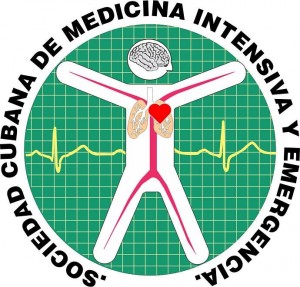Acute poisonings presenting to the accident and emergency department in Botswana / Envenenamiento agudo presentados en el departamento de emergencia en Botswana
Palabras clave:
acute poisoning, toxic substances, emergency departmentResumen
Background: acute poisonings commonly present to the accident and emergency (A&E) department, but specific epidemiologic data regarding poisonings in Botswana is limited in the current medical literature. This study was performed to generate patterns on which future studies and preventative programs can be based.
Method: this is a retrospective chart review conducted on poisoning cases which presented to the A&E in Princess Marina Hospital (PMH) in Gaborone, Botswana from January 2016 to June 2016.
Results: 289 patients were seen in the A&E at PMH for acute poisonings. Of these, 57% were female. Of all the toxic exposures, 58% were intentional. Patients who were age 16-35 were more commonly affected than younger and older patients. While most patients were admitted, only 3 required ICU and the case fatality rate among all patients was 0.7%.
Conclusions: the rate of toxic exposure cases in Botswana appears to be increasing. Paraffin, paracetamol, snake bites, traditional medicines and unknown ingestions are the most commonly encountered poisonings presenting to the A&E in the first half of the year. Many of these are mild and can be discharged home without hospital admission; however, some are deadly and require close monitoring and aggressive care. Paraffin ingestion is quite common among children, at times fatal and almost always accidental making it an ideal target for public health initiatives. Women are more likely than men to ingest toxic substances and more commonly do so intentionally. This investigation was limited by its retrospective design, but shows basic patterns on which larger and prospective studies can be based.
Descargas
Citas
REFERENCES
1. Belonwu R, Adeleke S. A Seven - Year Review of Accidental Kerosene Poisoning in Children at Aminu Kano Teaching Hospital. Niger J Med [Internet]. 2008 [cited 2017 Apr 14];17(4):380–2. Available from: http://www.ncbi.nlm.nih.gov/pubmed/19048749
2. Chandra A, Mullan P, Ho-Foster A, Langeveldt A, Caruso N, Motsumi J, et al. Epidemiology of patients presenting to the emergency centre of Princess Marina Hospital in Gaborone, Botswana. African J Emerg Med [Internet]. 2014;4(3):109–14. Available from: http://dx.doi.org/10.1016/j.afjem.2013.12.004
3. Eddleston M. Patterns and problems of deliberate self-poisoning in the developing world. QJM [Internet]. 2000 Nov [cited 2017 Apr 14];93(11):715–31. Available from: http://www.ncbi.nlm.nih.gov/pubmed/11077028
4. Malangu N. Characteristics of acute poisoning at two referral hospitals in Francistown and Gaborone. South African Fam Pract. 2008;50(3):67.
5. Malangu N. Acute poisoning in three African countries: Botswana, South Africa and Uganda. [cited 2017 Apr 14]; Available from: http://ul.netd.ac.za/bitstream/handle/10386/674/NMalanguDSc_Thesis_2012_May.pdf?sequence=1
6. Tadesse E, Mariam G/, Gelaw BK. Global epidemiology of acute Poisoning with an Emphasis to Ethiopia: Systematic Review Citation:Esayas Tadesse G/Mariam et al. Global epidemiology of acute poisoning with an emphasis to Ethiopia: systematic review. Int. Int J Pharma Sci Sci Res An open Access J Int J Pharma Sci Sci Res J Pharm Sci Sci Res [Internet]. 2016 [cited 2017 Apr 14];24(2):161–71. Available from: https://biocoreopen.org/articles/Global-epidemiology-of-acute-Poisoning-with-an-Emphasis-to-Ethiopia--Systematic-Review.pdf
7. Mowry JB, Spyker DA, Cantilena LR, Bailey JE, Ford M. 2012 Annual Report of the American Association of Poison Control Centers â€TM National Poison Data System (NPDS): 30th Annual Report NPDS — Near Real-time Data Capture. Clin Toxicol. 2013;51(10):949–1229.
8. Reed RP, Conradie FM. The epidemiology and clinical features of paraffin (kerosene) poisoning in rural African children. Ann Trop Paediatr [Internet]. 1997 Mar [cited 2017 Apr 14];17(1):49–55. Available from: http://www.ncbi.nlm.nih.gov/pubmed/9176578







